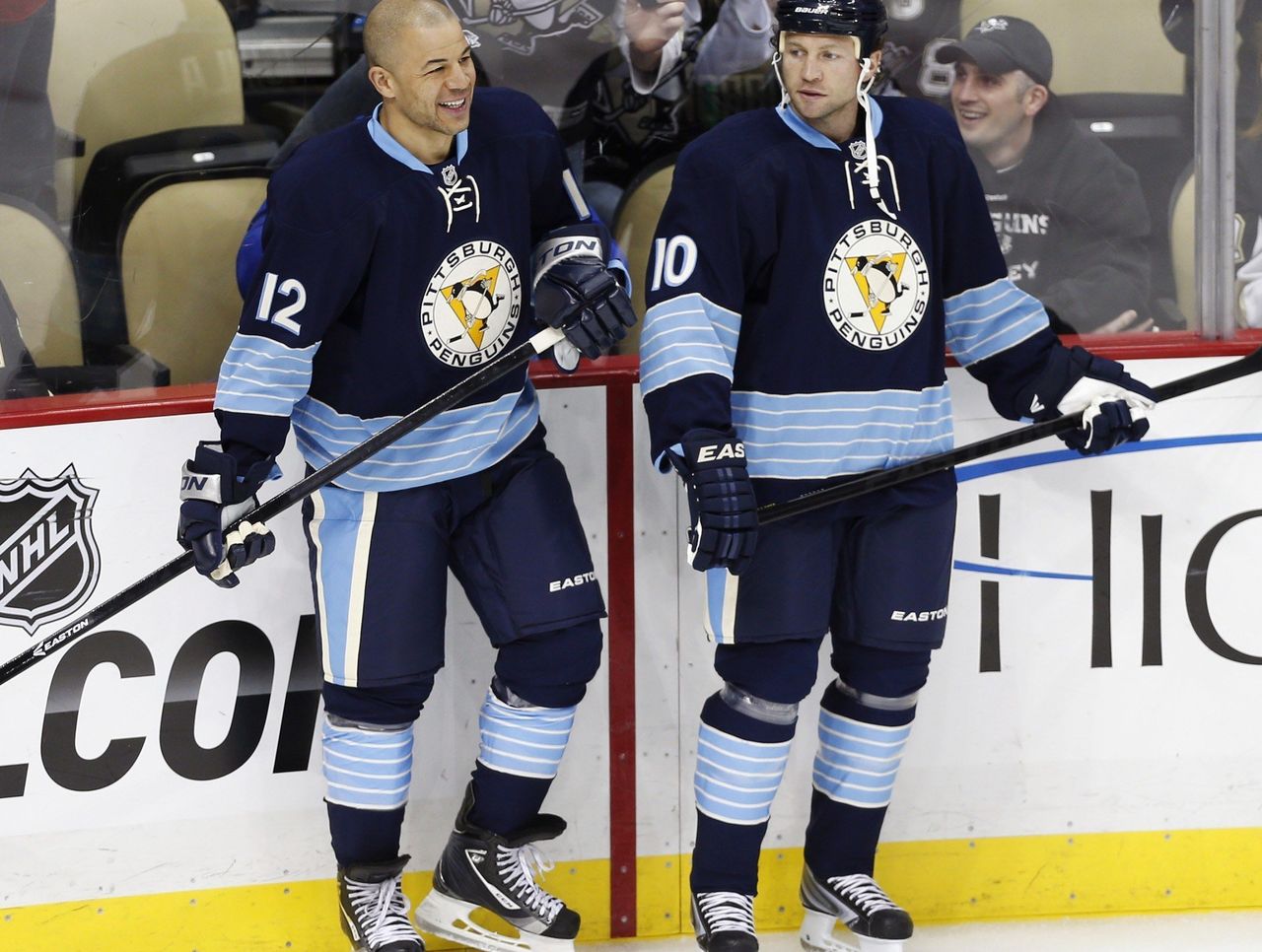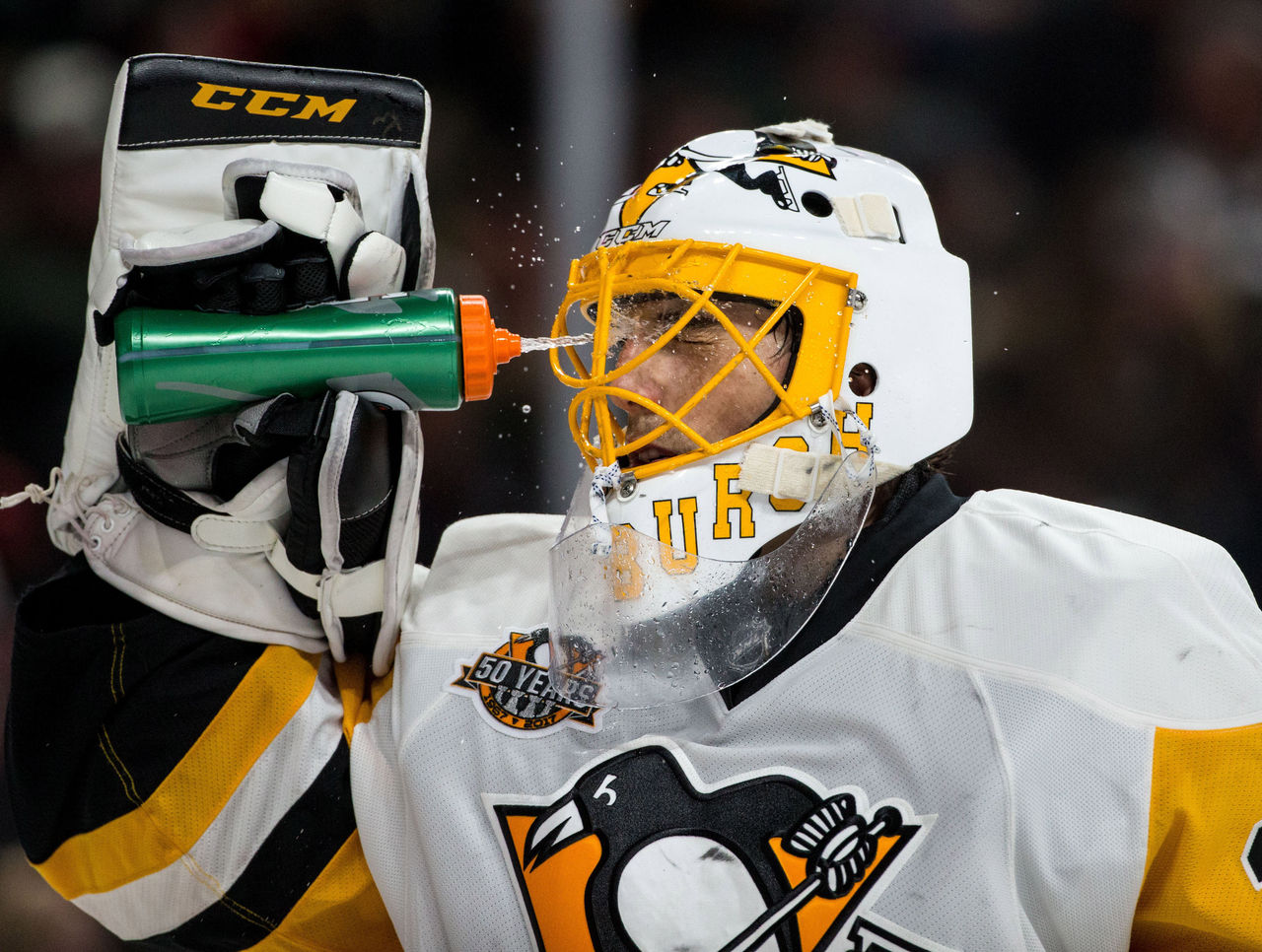3 reasons the Penguins can win big by going small at the deadline

The Pittsburgh Penguins' road to the 2016 Stanley Cup wasn't without a few bumps and bruises.
A horrid first half led to the dismissal of head coach Mike Johnston, and a lengthy absence for injured star pivot Evgeni Malkin further added to the Penguins' struggles. It took a number of astute moves to keep the club afloat and push it to the second championship of the Sidney Crosby era.
But only a small part of that equation came at the trade deadline. After years of being one of the biggest players leading up to deadline day, Pittsburgh took a different approach last year, and the results speak for themselves.
That in mind, here are three reasons the Penguins can win big once again by avoiding the blockbusters:
1. Sticking to minor tweaks paid off in 2016
A quick review.
The Penguins made some significant changes to their roster once Rutherford took over - the most noteworthy being the trade that sent James Neal to Nashville in exchange for Patric Hornqvist, and the swap that brought Phil Kessel to town from the Toronto Maple Leafs.
Both of those trades happened in the offseason (Hornqvist in 2014, Kessel in 2015), as did the deal for former Vancouver Canucks pivot Nick Bonino, who came to town less than a month after Kessel.
Rutherford made just three in-season deals prior to the 2016 deadline, two of them far ahead of time. Trevor Daley was added in December - with Rob Scuderi sent to Chicago - and Rutherford acquired Carl Hagelin in January in exchange for David Perron and Adam Clendening.
His only major-league deal in the days leading up to the deadline? A 2016 third-round pick to the Edmonton Oilers in exchange for Justin Schultz.
None of those three trades seemed all too significant at the time. Of course, all three of those players became key contributors for the club because they fit perfectly with the team's style of play - particularly Daley, who's been one of the club's top defensemen since, and Hagelin, who caught fire as part of the "HBK" line.

2. Pittsburgh knows what happens when you go big and miss
Midway through the lockout-shortened 2012-13 season, the Penguins were rolling through a 12-game win streak, the longest such stretch of victories of any team that season.
Then came a flurry of trades to beef up the contending club right before the deadline, with the Penguins adding Dallas Stars captain Brenden Morrow, hulking defenseman Douglas Murray, skillful veteran Jussi Jokinen, and future Hall of Famer Jarome Iginla.
The black and gold looked well-stocked and ready to dominate, and did just that over the short stretch of remaining regular-season games, winning eight of 10.
But the wheels came off during the playoffs. Pittsburgh had enough raw talent to make it to the Eastern Conference final, but once the competition ramped up, the club found itself swept in four straight by the Boston Bruins.
A number of factors contributed to the early exit - the injury bug certainly did the Penguins no favors - but it's fair to assume the significant turnover in the locker room just one month before the playoffs didn't help matters.
Iginla, in particular, wound up being a prime example of a home-run attempt that fell well short. The veteran never quite fit, and the team's offense sunk.
3. Rutherford has options, but the Penguins have all they need

The Penguins manager holds one of the league's most coveted trade chips heading into the deadline, as netminder Marc-Andre Fleury seems a clear candidate to move.
Matt Murray has all but claimed the starter's role in Pittsburgh, and with the expansion draft looming, Rutherford has said the club will move Fleury if the veteran wants out.
But there's no reason Pittsburgh should shake things up with a big-time move unless something undeniable comes along - especially since that deal will likely alter the club's proven chemistry moving forward.
Adding a notable piece in exchange for Fleury could help the Penguins deal with their injury woes, but if everyone is due back before the playoffs - as they appear to be - holding off might be the better option.
Pittsburgh still boasts exceptional depth down the middle with Crosby, Malkin, Bonino, and Matt Cullen. And the club struck gold last season with its current crop of wingers.
In fact, the Penguins have enough talented young forwards on the cusp - particularly Scott Wilson, Tom Kuhnhackl, and Jake Guentzel - that they're rotating a few notable names fighting to claim roster spots. Pittsburgh did just fine with that formula last year, as Conor Sheary and Bryan Rust clawed their way into central roles in the top six.
A minor move or two to shore things up may help the club down the stretch. But given the fact that Pittsburgh brought back nearly its entire Stanley Cup roster in 2016-17, too much change could derail what could be a prime opportunity to repeat as champs.
HEADLINES
- Karlsson acknowledges possibility of trade: 'Been through this before'
- Playoff pressure index: 3 teams and 3 players with the most to prove
- Stars' Robertson week-to-week with lower-body injury
- Luka excited for Gobert matchup: 'I like to get a center on me'
- Stanley Cup Playoffs Round 1 watchability rankings